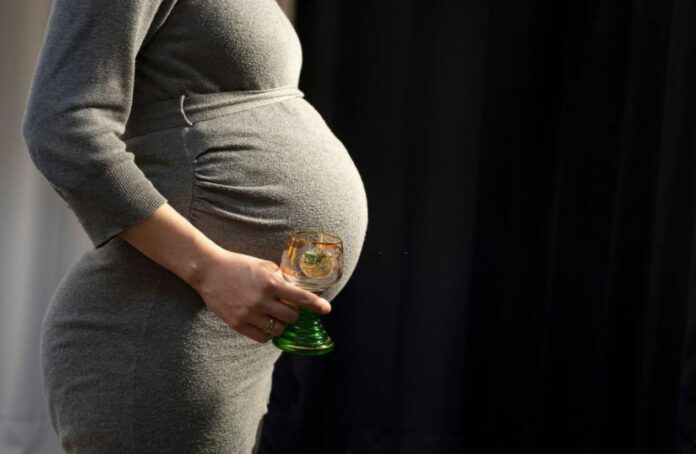As suggested by a new study no amount of alcohol is safe for a child’s brain. Drinking any amount of alcohol can change the way a baby’s brain develops and matures. They warn: “pregnant women should strictly avoid alcohol consumption.”
A new MRI study found that drinking even small to moderate amounts of alcohol during pregnancy can change the structure of the baby’s brain and slow brain development.
In this study, the team used “Fetal MRI”, as it allows, according to senior author Gregor Kasprian, “to make accurate statements about brain maturation prenatally.”
Fetal alcohol spectrum disorders are a group of conditions that can happen to the baby if the mother drinks alcohol while she is pregnant. Babies born with fetal alcohol spectrum diseases may experience developmental delays in speech and language, learning problems, or behavioral issues.
According to lead author Patric Kienast, “many pregnant women are unaware of the influence of alcohol on the fetus during pregnancy.”
“Therefore, it is our responsibility not only to do the research but also to actively educate the public about the effects of alcohol on the fetus.”
The researchers examined MRI scans of 24 fetuses who had prenatal alcohol consumption for the study. At the time of the MRI, the fetuses were between 22 and 36 weeks of gestation. Anonymous surveys given to the mothers helped identify the mothers’ alcohol exposure. The Pregnancy Risk Assessment Monitoring System (PRAMS), a surveillance initiative of the Centers for Disease Control and Prevention and health departments, and the T-ACE Screening Tool, a measurement tool comprising four questions that detect risk drinking, were utilized as questionnaires.
The fetal total maturation score (fTMS) was significantly lower in fetuses exposed to alcohol than in controls the same age, and the right superior temporal sulcus (STS) was shallower. Language perception, audiovisual integration, and social cognition are all influenced by the STS.
“We found the greatest changes in the temporal brain region and STS,” adds Dr. Kasprian. “We know that this region, and specifically the formation of the STS, has a great influence on language development during childhood.”
Even at low alcohol exposure levels, the fetuses showed signs of brain changes.
“Seventeen of 24 mothers drank alcohol relatively infrequently, with average alcohol consumption of less than one alcoholic drink per week,” Dr. Kienast explains. “Nevertheless, we were able to detect significant changes in these fetuses based on prenatal MRI.”
Three moms had between one and three drinks a week, and two moms had between four and six drinks a week. One mother had at least 14 drinks each week on average. Additionally, six moms reported having at least one binge drinking incident (more than four drinks on one occasion) when they were pregnant.
Researchers think that a delayed stage of myelination and less clear gyrification in the frontal and occipital lobes could be linked to a delayed stage of fetal brain development.
Myelination is an important part of how the brain and nervous system work. Nerve cells are shielded by myelin, which speeds up information transmission. Myelination has a direct role in crucial newborn developmental milestones like rolling over, crawling, and language development.
Gyrification is the process by which the folds of the brain’s cortex form. With less room in the skull, this folding increases the cortex’s surface area, enhancing cognitive function. When gyrification is lowered, functionality suffers.
“Pregnant women should strictly avoid alcohol consumption,” Dr. Kienast warns. “As we show in our study, even low levels of alcohol consumption can lead to structural changes in brain development and delayed brain maturation.”
It is not clear how these changes in structure will affect how these babies’ brains grow and change after they are born.
“To assess this accurately, we need to wait for the children who were examined as fetuses at that time to get a little older, so that we can invite them back for further examinations,” Dr. Kienast adds. “However, we can strongly assume that the changes we discovered contribute to the cognitive and behavioral difficulties that may occur during childhood.”
The study’s findings will be presented next week at the Radiological Society of North America’s (RSNA) annual meeting.
Image Credit: Ute Grabowsky/Photothek via Getty Images
